#organic npk fertilizer at home
Text
9 Best Organic NPK Fertilizers in 2024
In the world of gardening and farming, one term you’ll often come across is ‘NPK Fertilizer’. But what does it mean? And why is it so important? NPK stands for Nitrogen, Phosphorus, and Potassium, three vital nutrients that plants need to thrive. While there are many types of fertilizers available in the market, this blog post focuses on organic NPK fertilizers.
Why organic, you ask? Organic NPK…
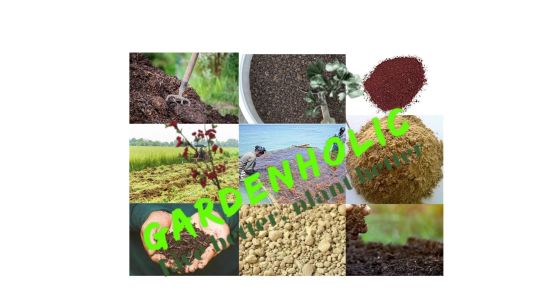
View On WordPress
#best organic npk fertilizer#conclusion of blog post#Gardening tips#how do chemical pesticides affect plants#How do you make natural NPK fertilizer at home?#how to apply natural pesticide#how to use organic pesticides around children and pets#natural fertilizers#natural pesticide#npk liquid fertilizer iffco#organic fertilizers#organic gardening#organic npk 19:19:19#organic npk fertilizer 50 kg price#organic npk fertilizer at home#organic npk fertilizer india#Organic npk fertilizer price#Organic npk fertilizer uses#resources for gardeners#What is NPK organic fertilizer?#Which is the best organic NPK fertilizer?#Which is the best organic NPK fertilizer? How do you make natural NPK fertilizer at home? Which organic fertilizer has the highest NPK? What#Which organic fertilizer has the highest NPK?
0 notes
Text
Arabian Jasmine
ARABIAN JASMINE
Arabian Jasmine flowers are king of fragrant flowers. Jasmine are of more than 200+ varieties around the world. But Arabian jasmine occupies the remarkable place for strong fragrance & layered flowers. Jasmine is belonging to genus Jasminum and family Oleraceae.

Arabian jasmine flower
This Arabian jasmine flowers are bright white, double layered, tubular, lobed oval flowers contain 9 to 10 petals has sweet & strong fragrance throughout your garden. Flowers contains two stamens with very short filaments.
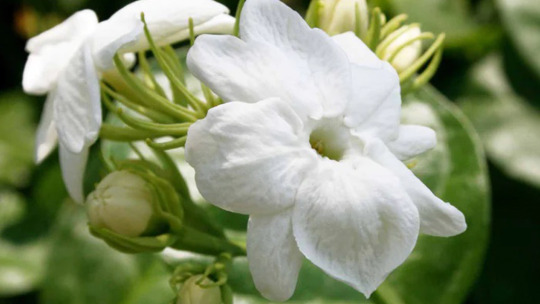
Arabian jasmine plant
Like all jasmine plant varieties, this plant is perennial evergreen with thin woody branches. Arabian jasmine plants are small shrubs with lush foliage. And its climber vines reach up to the height of 25-30 cm & spreads wide 10-20 cm. Arabian jasmine plants are native to Asia, grows healthy & excellent in all climatic conditions of India.
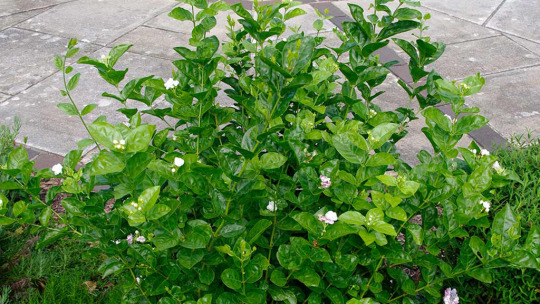
Jasminum sambac
Arabian jasmine flower has scientific name Jasminum sambac spreads rapidly as shrub or veins with upright habits. Jasminum sambac is popularly called as “Belle of India” meaning Queen of India. Presence of Scent fragrance refreshes the mind & environment.

How to grow Arabian jasmine
Arabian jasmine plants are considered as‘megastar of garden’. This can grow well in garden areas such as home garden & terrace garden. This plant can be grown in grow bags, pots or any suitable container.
Flower farmer’s most cultivated plants are Arabian jasmine plants with high yield & it is most suitable for scent preparation purposes.
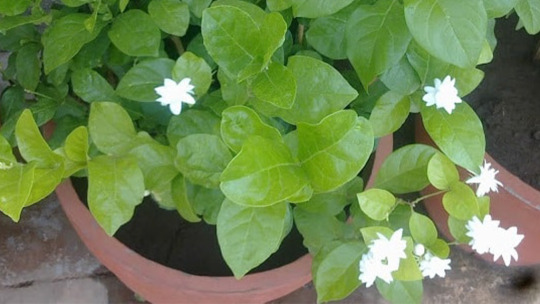
Soil
Arabian jasmine plants prefer to grow in loose, loamy, well-drained soil with some organic matter content mostly prefers to grow in acidic to slight acidic soil of pH of 4.5 to 6.9.
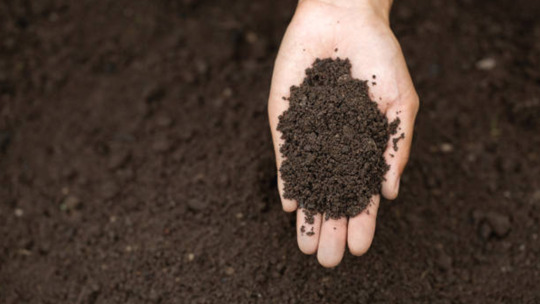
Sunlight
This plant requires ample of sun light i.e. is direct sun light of 4-6 hours. It can also tolerate in shade.

Temperature
Ideal temperature for Arabian jasmine plant is 85-90 degree Celsius during day time & in night time 70-80 degree Celsius.
Watering
Moderate to average water application is given. Alternate day water application but not to make the soil soggy & wet. Because overwatering may lead to root rot diseases. Avoid watering in winter seasons(November-December).
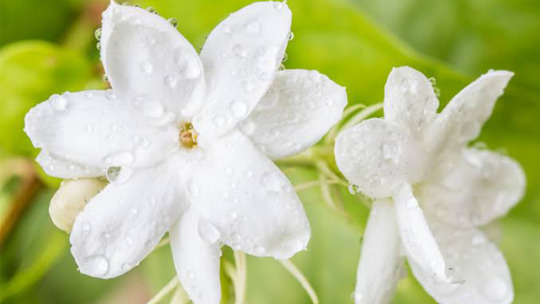
Fertilizer
Application of organic fertilizer such as vermicompost, cow manure or goat manure, Groundnut cake powder for nitrogen enhancement & to increase soil fertility.

Organic fertilizer for pest attack
Application of Neem oil, Bio-Npk, Steamed bone meal once in three months. Not to over fertilize the plants. Application of organic fertilizer given only in required quantity. Prefer to grow plants by using organic fertilizer.
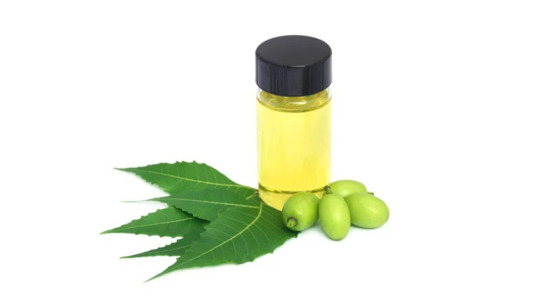
Repotting
This plant does not like to grow in too large pot, because it may lead to water stagnation. Select the pot of 3-4’’and once if the plant grows large. Transfer the plants to big size pot compared to last one but most importantly not to damage the roots.
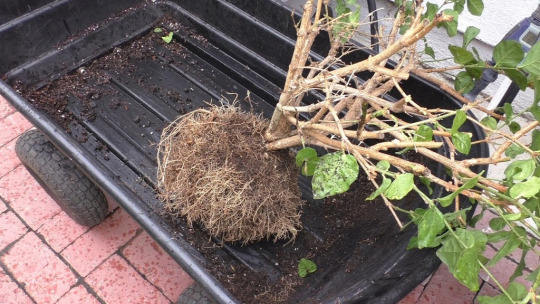
Pruning:
Prune the Arabian jasmine plants in winter, because flower blooming will be less compared to other seasons.Trim the old, diseased and matured plant parts to encourage fast growth in plants.

Harvest:
To get fresh flower yield, fully developed & unopened flower buds are hand-picked in the early morning or late evening. Probably harvesting time starts from 6 months after planting.
Life time of Jasmine plant:

Yield:
Expected average yield of about 800-900 kg of flowers per acre. In houseplant we can expect about 1kg of flower yield.

All and above grow plants good and healthy by using organic & traditional method of practices to grow plants. Go green and make our environment clean & green.
Blog compiled by : Santhionlineplants
#ARABIAN JASMINE#Arabian Jasmine flowers are king of fragrant flowers. Jasmine are of more than 200+ varieties around the world. But Arabian jasmine occupie#Jasmine flower#Arabian jasmine flower#This Arabian jasmine flowers are bright white#double layered#tubular#lobed oval flowers contain 9 to 10 petals has sweet & strong fragrance throughout your garden. Flowers contains two stamens with very short#Arabian jasmine plant#Like all jasmine plant varieties#this plant is perennial evergreen with thin woody branches. Arabian jasmine plants are small shrubs with lush foliage. And its climber vine#grows healthy & excellent in all climatic conditions of India.#Arabian jasmine flower plant#Jasminum sambac#Arabian jasmine flower has scientific name Jasminum sambac spreads rapidly as shrub or veins with upright habits. Jasminum sambac is popula#jasminum sambac#How to grow Arabian jasmine#Arabian jasmine plants are considered as‘megastar of garden’. This can grow well in garden areas such as home garden & terrace garden. This#pots or any suitable container.#Flower farmer’s most cultivated plants are Arabian jasmine plants with high yield & it is most suitable for scent preparation purposes.#arabian jasmine growth#Soil#Arabian jasmine plants prefer to grow in loose#loamy#well-drained soil with some organic matter content mostly prefers to grow in acidic to slight acidic soil of pH of 4.5 to 6.9.#soil#Sunlight#This plant requires ample of sun light i.e. is direct sun light of 4-6 hours. It can also tolerate in shade.#Temperature#Ideal temperature for Arabian jasmine plant is 85-90 degree Celsius during day time & in night time 70-80 degree Celsius.
5 notes
·
View notes
Text
France, the home of wine, is known for its strict viticulture and winemaking techniques. In this land, the application of fertilizer granulator is quietly changing the face of the wine industry. Through the reasonable proportion of organic fertilizer and inorganic fertilizer, the granulator produces fertilizer particles suitable for grape growth, which not only improves the quality of grapes, but also ensures the flavor of wine.
Organic Fertilizer Production Line
The application of Organic Fertilizer Production Line in French vineyards is the key to improving soil fertility and grape quality. By converting organic matter such as agricultural waste and animal manure into organic fertilizer, this production line not only realizes the recycling of resources, but also provides rich nutrition for grapes. The use of organic fertilizer helps to enhance the water retention and air permeability of the soil, creating good conditions for the growth of grape roots.

NPK Fertilizer Production Line
The application of NPK Fertilizer Production Line in France provides a balanced nutritional supply for the vineyards. This line can precisely adjust the ratio of nitrogen, phosphorus and potassium in fertilizers according to the needs of different grape varieties and growth stages. By using this compound fertilizer, vineyard managers can more specifically meet the growing needs of grapes, thereby increasing the yield and quality of grapes.

Fertilizer Granules Compaction Machine
Fertilizer Granules Compaction Machine is a kind of fertilizer granulation machine commonly used in French vineyards. It squeezes fertilizer raw materials into a granular form through physical action, which is easy to apply and not easily dispersed by wind or water. The Fertilizer Granules produced by the Fertilizer Granules Compaction Machine are evenly distributed in the soil, ensuring that the grape roots absorb nutrients in a balanced manner.

Horizontal Ribbon Mixer
An even mixture of fertilizers is essential to ensure the nutrient balance of the vineyard soil. Horizontal Ribbon Mixer, with its unique mixing method, ensures the full mixing of various fertilizer ingredients. The application of this mixer makes the products on the fertilizer production line more uniform and improves the use effect of fertilizer.
With these advanced fertilizer lines and granulation techniques, French vineyards are able to produce better quality grapes, which in turn produce better tasting wines. The application of these technologies not only improves the production efficiency of vineyards, but also provides valuable experience for the sustainable development of the global wine industry.
#Organic Fertilizer Production Line#NPK Fertilizer Production Line#Fertilizer Granules Compaction Machine#Horizontal Ribbon Mixer
0 notes
Text
Thailand, as the home of durian, produces the best quality durian in the world with its unique tropical climate and fertile soil. However, the high-quality output of durian gardens is no accident, which lies behind an organic fertilizer revolution that is rewriting the face of Thai agriculture.
Organic Fertilizer Production Line: The secret to improving the quality of durian
Durian growers in Thailand have come to realize that while traditional fertilizer cultivation can bring high yields in the short term, it can damage the soil structure and affect the quality and flavor of the durian in the long term. As a result, they have turned to Organic Fertilizer Production Line, using organic fertilizers to enhance the quality of durians. Organic Fertilizer Production Line can transform organic waste such as animal manure and plant residues into efficient organic fertilizers, which are rich in various nutrients required for crop growth, and can significantly improve the sweetness and taste of durian.

NPK Fertilizer Production Line: A booster for durian growth
The application of NPK Fertilizer Production Line in durian gardens in Thailand provides balanced nutrition for durian growth. Nitrogen fertilizer promotes leafy growth, phosphate fertilizer enhances root development, and potassium fertilizer improves disease resistance and fruit quality. Through precise formulation and modern production process, NPK compound fertilizer can provide comprehensive nutritional support for durian to ensure the healthy growth of durian.

Fertilizer Granules Compaction Machine: Innovative technology of organic fertilizer granulation
In the production process of organic Fertilizer, Fertilizer Granules Compaction Machine plays a vital role. This kind of granulator makes organic fertilizer raw materials into granules through high pressure extrusion, which is not only easy to apply, but also can improve the utilization rate of fertilizer. The organic Fertilizer particles produced by the Fertilizer Granules Compaction Machine can be more evenly distributed in the soil of the durian garden, thus providing a more stable and lasting nutrient supply.

Horizontal Ribbon Mixer: Uniform mixing for organic fertilizer production
In the preparation process of organic fertilizer, uniform mixing is the key step to ensure the quality of fertilizer. The Horizontal Ribbon Mixer plays an irreplaceable role in this process. Through horizontal rotation, it ensures that various organic fertilizer raw materials can be fully mixed, so as to produce organic fertilizer with uniform quality and remarkable effect. The application of this mixer makes the production of organic fertilizer more scientific and efficient, and provides strong support for the soil improvement and quality improvement of durian gardens.

Through the application of these advanced organic fertilizer production technologies and equipment, Thailand's durian gardens are undergoing a green revolution. This revolution has not only improved the quality and flavor of durian, but also provided new ideas and methods for the sustainable development of Thai agriculture. With the wide application of organic fertilizers, the sweet flavor of Thai durian is becoming the object of global consumer demand.
#Organic Fertilizer Production Line#NPK Fertilizer Production Line#Fertilizer Granules Compaction Machine#Horizontal Ribbon Mixer
0 notes
Text
Nurturing Green Havens: The Essentials of Indoor Plant Fertilizer

In an age where urban living often means limited access to green spaces, indoor plants have become a beloved addition to homes and offices. These green companions not only enhance aesthetic appeal but also offer numerous health benefits, such as improved air quality and reduced stress levels. However, like any living organism, indoor plants require proper care to thrive, and one of the key aspects of their care is nutrition. This is where indoor plant fertilizers come into play. In this blog, we'll explore the importance of indoor plant fertilizers, the types available, and how to choose the right one for your green companions.
Why Indoor Plant Fertilizer is Crucial
Indoor plants, unlike their outdoor counterparts, are restricted to the nutrients available in the soil of their pots. Over time, these nutrients get depleted, and without replenishment, plants can suffer from nutrient deficiencies. This can lead to stunted growth, yellowing leaves, and even the death of the plant. Indoor plant fertilizers are essential because they provide the necessary nutrients that plants cannot obtain on their own in a confined environment.
Understanding the Basics: NPK Ratio
Indoor plant fertilizers are typically categorized based on their NPK ratio, which stands for Nitrogen (N), Phosphorus (P), and Potassium (K). These three macronutrients are essential for plant growth:
Nitrogen (N): Promotes leafy green growth and is crucial for photosynthesis.
Phosphorus (P): Essential for root development and flower production.
Potassium (K): Helps with overall plant health, including disease resistance and water regulation.
A balanced NPK ratio is important, but the specific needs can vary based on the type of plant and its growth stage. For instance, leafy plants may require a fertilizer with higher nitrogen content, while flowering plants may benefit from more phosphorus.
Types of Indoor Plant Fertilizers
Indoor plant fertilizers come in various forms, each with its own advantages:
Liquid Fertilizers: These are easy to apply and can be quickly absorbed by the plants. They are often used during the growing season and can be mixed with water for regular feeding.
Granular Fertilizers: These are slow-release fertilizers that provide nutrients over a longer period. They are mixed into the soil and are ideal for long-term feeding.
Organic Fertilizers: Made from natural materials like compost, manure, or bone meal, these fertilizers are an excellent choice for those looking to grow plants sustainably. They release nutrients slowly and improve soil structure.
Synthetic Fertilizers: These are man-made fertilizers that provide a quick nutrient boost. They are available in both liquid and granular forms and are often more concentrated than organic options.
Choosing the Right Indoor Plant Fertilizer
When selecting an indoor plant fertilizer, consider the specific needs of your plants. Here are some tips to help you choose the right one:
Know Your Plants: Different plants have different nutritional needs. For example, succulents require less frequent feeding compared to fast-growing herbs or flowering plants.
Check the NPK Ratio: Choose a fertilizer with an NPK ratio that matches the needs of your plants. For instance, a fertilizer with a higher nitrogen content is suitable for leafy plants, while one with more phosphorus is ideal for flowering plants.
Consider the Growth Stage: Young plants and seedlings may benefit from a balanced fertilizer, while mature plants may require different ratios depending on their growth cycle.
Opt for Quality: Whether you choose organic or synthetic, ensure that the fertilizer is of high quality and free from harmful chemicals.
Follow the Instructions: Over-fertilizing can be as harmful as under-fertilizing. Always follow the instructions on the fertilizer package regarding the amount and frequency of application.
Best Practices for Using Indoor Plant Fertilizer
Timing is Key: Fertilize during the growing season (spring and summer) when plants are actively growing. Reduce or stop fertilizing during the dormant period (fall and winter).
Watering Matters: Water your plants before applying fertilizer to prevent root burn. This also helps the nutrients to be absorbed more efficiently.
Observe and Adjust: Keep an eye on your plants' health. Yellowing leaves, stunted growth, or wilting can indicate nutrient deficiencies or over-fertilization. Adjust your feeding schedule accordingly.
Conclusion
Indoor plants bring life and vibrancy to our living spaces, but they need proper care to thrive. Using the right indoor plant fertilizer is crucial for providing the necessary nutrients and ensuring healthy growth. At Karudaa Coirs, we offer a range of high-quality indoor plant fertilizers designed to meet the specific needs of your plants. Whether you're nurturing leafy greens, vibrant flowers, or resilient succulents, choosing the right fertilizer can make all the difference in creating a lush, thriving indoor garden. Remember, a well-fed plant is a happy plant!
#IndoorPlantFertilizer#Houseplants#PlantCare#HealthyPlants#Gardening#GreenLiving#PlantNutrition#HomeGarden
0 notes
Text
How to Grow Verbena Flower from Seeds At Home?
Verbena flowers are known for their floral clustered bloom. These colorful florals impart a beautiful edge to your garden. Verbena flowers are available in extensive color varieties, making them a top choice among gardeners to elevate the look of their garden and add a touch of vibrant color. If you are a gardening enthusiast who wants to grow these colorful flowers in your home garden, this guide is just for you!

Verbena flower
Verbena is an annual plant and has over 250 varieties. These annuals are notable for their cluster growth, color varieties, and pollinating properties, attracting pollinators like bees and butterflies to your garden. Verbenas are also known as vervain. While they are a common annual flowering plant, they can also be sometimes grown as perennials. These flowers have distinct dark green leaves and color varieties like pink, red, purple, blue, white, etc. This plant requires full sunlight, well-draining soil, and moist temperature, thus making it a great choice in Indian terrain.
Varieties Of Verbena
Trailing verbena
Purple top verbena
Tuberous vervain
Moss verbena
Brazilian verbena
California vervain
White curtain
Blue vervain
Blue princess verbena
How to grow Verbena flowers using seeds?
Following are the steps to grow Verbena flowers using Verbena seeds:
Location: Verbena seeds need full sunlight. You must choose a location receiving ample sunlight (at least six to eight hours).
Soil: Verbena flowers require rich soil mixed with compost or pot mix. It does not have any specific soil type requirement however the soil must have ample drainage. Avoid using clay or compact soil, as it can cause root rot.
Seeds preparation: It is essential to source high-quality verbena seeds to ensure you get a good bloom. Experts recommend sourcing organic seeds online in India from a plant nursery or a wholesale plant nursery near you. Soak the seeds in overnight to accelerate the germination process.
Planting the verbena seeds: Once you prepare the soil, loosen it and ensure you plant the seeds six inches deep and 12 inches apart. Ensure you cover the seeds lightly with soil, allowing them to breathe.
Watering: These flowers require less moist soil and can tolerate drought conditions to some extent. Adding excess water to your verbena flower can lead to mildew or root rot. Ensure the soil is dry before you water the plant again.
Fertilizing: Verbena flower can bloom well with a slow-release NPK fertilizer. You can also use organic fertilizers each month. If you are unsure about the plant’s fertilizer requirements or how to use fertilizers for floral plants, consult experts at plant nurseries in Mumbai like Ratanshi Agro-Hortitech.
Pruning: Cut the spent verbena flowers using gardening scissors. You can also trim the plants per your garden trail during its blooming season, allowing new flowers and growth.
Frequently asked questions
Are verbena flow perennial or annual?
The verbena flowers are mostly grown as annual hybrids. However, some varieties, like the Purpletop verbena growing in warm climates, are grown as perennials.
Can verbena survive in partial sunlight?
Verbena is a sun-loving floral plant and requires a minimum of 6 to 10 hours of full sunlight daily.
In how many days do verbenas blossom or acquire full bloom?
Verbena plants typically take around 90 to 100 days from sowing verbena seeds to reach full bloom.
Final thoughts!Growing verbena from seeds in your home garden is a delightful and relatively simple gardening project if you choose the right products. To ensure you get a full bloom from your verbena seeds, always source organic seeds online in India from reputed nurseries like Ratanshi Agro-Hortitech. You can also choose other gardening supplies from the plant nursery in Mumbai! Happy gardening!
0 notes
Text
Pothos fertilizer
Introduction: Pothos plants, with their vibrant foliage and easy-care nature, have become a beloved choice for indoor gardeners. These versatile plants not only add a touch of greenery to any space but also help purify the air. To ensure your pothos thrives and continues to brighten up your home, proper fertilization is key. In this guide, we'll delve into the essential aspects of fertilizing pothos plants, enabling you to cultivate lush and healthy specimens in your home.
Understanding Pothos Fertilizer Needs: Pothos plants are not heavy feeders, meaning they do not require frequent fertilization. However, providing them with the right nutrients at the appropriate times can significantly enhance their growth and appearance. Pothos typically benefit from a balanced fertilizer, which supplies essential macro and micronutrients in suitable proportions. Look for a fertilizer with an NPK (Nitrogen, Phosphorus, Potassium) ratio of around 20-20-20 or similar, which provides a balanced blend for overall plant health.
When to Fertilize: Fertilizing your pothos plants during their active growing season, which typically spans from spring to early fall, is crucial. During this period of vigorous growth, the plant's nutrient requirements are higher, and fertilization can support robust foliage development. Aim to fertilize your pothos every four to six weeks during this period. In contrast, reduce or cease fertilization during the plant's dormant phase in the winter months when growth slows down.
Application Methods: There are various methods for applying fertilizer to pothos plants, each with its advantages. Here are some common approaches:
Liquid Fertilizer: Dilute liquid pothos fertilizer to half or quarter strength and apply it directly to the soil during watering sessions. This allows for efficient nutrient absorption by the plant's roots.
Slow-Release Pellets: These pellets gradually release nutrients into the soil over an extended period, reducing the frequency of fertilizer application. Simply place the pellets in the soil according to package instructions.
Foliar Feeding: Occasionally, you can mist the foliage of your pothos with a diluted liquid fertilizer solution. However, this method should complement rather than replace soil fertilization.
Organic Alternatives: If you prefer organic options, consider using compost or compost tea to fertilize your pothos plants. These natural fertilizers enrich the soil and promote a healthy soil ecosystem.
Precautions and Tips:
Always follow the instructions provided on the fertilizer packaging to prevent overfertilization, which can harm your pothos.
Before applying fertilizer, ensure that the soil is moist to prevent root burn.
Flush the soil periodically with water to prevent salt buildup from fertilizers.
Monitor your pothos plants for signs of nutrient deficiencies or excesses, such as yellowing leaves or stunted growth, and adjust your fertilization regimen accordingly.
Conclusion: Fertilizing your pothos fertilizer plants appropriately is a simple yet essential aspect of their care routine. By understanding their fertilizer needs and adopting suitable application methods, you can ensure that your pothos thrives and continues to adorn your home with its lush foliage. With a little attention to fertilization, your pothos plants will reward you with vibrant growth and enduring beauty.
0 notes
Text
Good Number Of Reviews Before Using Gartenpflege Wien
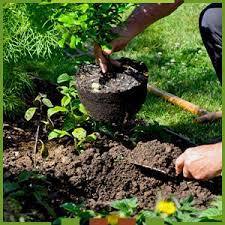
Vienna one is the most when compared to a East Virginia area; now this charming and public downtown benefits a large number of galleries, bistros and therefore malls in support of folks to appreciate being next to Hair Traps Live theater, Tysons Part window shopping community and even W&OD Trail. All of our landscapers also help choose state this particular covet within the country through the process of shutting residential and commercial estates inside splendidly beautiful art work.
A Garden service Vienna vary from landscaping trimming, weed command and also conception purposes, bush trimming, backyard sleep weeding coupled with mulching into fall over not to mention may which can garden plants theme, Garden maintenance Vienna also door installation solutions to give you one-stop malls for the desires. Our group will be able to get in touch with on your own an unit consistent with person desires with an upfront approximate to attempt business as needed. More favorable usually is to click on this link and take a look at much of our reputable webpage to find out about Garden worker Vienna.
You will need can add an amazing unique component part for your your home. Not only will this item produce a restful location you invest an individual's time and provide fresh new plant based remedies as well as veges, this can possibly multiply it has the all around increased value considerably. As it pertains to preserving your organic vegetable garden it is essential that a few particular things remain notion, consisting of comprehending the kind of fertilizer then mulch systems to apply, guidelines on how to gear weeds fruitfully, or every time very specific activities want mowing and also reseeding will have to be undertaken. While on an pleasing flowerbed causes your own home appearance the product's prime along with raising overall terrain beliefs all around As these kinds of thoughts mustn't be ignored seeing that with well maintained back yards accelerates each of those attributes although soaring homes respects substantially.
Protecting a patio and furthermore Garden care Vienna will involve a serious amounts of commitment using residence owners; lots of thinks at a loss for this career on it's own. One good thing is, gardening solutions be available that feature service getting rid of your personal load 2 . each of these pros offer up patio furniture from landscaping mowing along with mulching goods and services, leaf cleanups, flowerbed tile trim, bush pruning professional services, weed restrain uses and in some cases bonsai tree shaping . . . utilizing top level ratings to Property Advisor so that you know you were who receive top-quality offerings for the investment! All those who need to know Gartenpflege Wien, they can go here.
vimeo
Vienna is definitely amazing location both of these rest and then take a trip to, well known for it really is very long past and scores of leisure areas not to mention pubs to go through. Vienna has an amazing project here in fostering specific geographic area backyard gardens because locals, which is actually great rationale. These initiatives seek to produce individuals an event on mother nature through municipality restricts while allowing do-it-yourself population and inspiring your meals processing relations. One of several stimulating recreation folk take pleasure in at the time Horticulture Vienna is expanding their own internal produce. NPK Gartenpflege Target inside Vienna is an fantastic wide variety of vegetation equipment and supplies, additionally infrequently found and so innovative garden plants, professional person Garden service Vienna. NPK Gartenpflege This site offers herb garden routine maintenance expert services both hands or increase your health insurance and image of your residence. Today's skilled organization makes a specialty of pruning, mulching, weeding, seeding and also water; reducing brush; mowing and trimming pitch; travelling across hikes; purchasing pergolas trellises fences etcetera / yet by means of diverse smaller sized truck equipment for example like lawn mowers tractors to end these types of services.
Buyers interested in embark on growing on their own may possibly also hope to inside a location garden area. People moves tend to be on the market to virtually anyone and offer enough space available for benefits, vegetables and flowering plants of all kinds By often times from town locations and additionally serviced using volunteers.
0 notes
Text
Understanding Lemon Tree Fertilizer Needs:NPK Ratio: Citrus trees thrive on a balanced fertilizer with an NPK ratio such as 6-6-6 or a citrus-specific formula. These numbers represent Nitrogen (N) for foliage growth, Phosphorus (P) for root development and flowering, and Potassium (K) for overall health and fruit production. Micronutrients: Ensure your fertilizer also includes essential micronutrients like iron, zinc, and manganese, important for preventing deficiencies.
How to Fertilize:Timing: Fertilize young lemon trees every 4-6 weeks during the growing season (spring to fall). For mature trees, fertilize 3-4 times a year, avoiding fertilization in winter. Amount: Follow the instructions on the fertilizer package. Over-fertilization can cause damage. A general rule is to start with about 1/4 cup of fertilizer for a young tree and increase the amount with age. Application: Sprinkle the fertilizer evenly in a circle around the tree, extending slightly beyond the drip line (the outermost edge of the branches). Water thoroughly after fertilizing to help the nutrients reach the roots. Organic Options: Compost, fish emulsion, or other organic fertilizers are excellent options to improve soil quality and provide a slower release of nutrients.
Important Considerations:Soil Test: A soil test can determine specific nutrient needs in your soil, helping you tailor your fertilization plan. Tree Age: Young trees need more frequent fertilization than established trees. Potted Lemon Trees: Container-grown lemon trees need more frequent fertilization due to limited nutrients in the potting mix.
Helpful Links:University of Florida IFAS Extension: Citrus Culture in the Home Landscape https://edis.ifas.ufl.edu/publication/HS132 The Home Depot: How to Care for Citrus Trees https://www.homedepot.com/c/ai/how-to-care-for-citrus-trees/9ba683603be9fa5395fab90c37a6c84 BAC Online: Lemon Tree Fertilizer https://www.bacfertilizers.com/fertilizer/lemon-tree-fertilizer
Warners Tree Surgery Is A Mesa, Arizona (Based)“Family Business". Our Tree Expert, Warner, Is available To Help You With Your Sick Trees If You Live Within A 30 Mile Radius Of Mesa. Warner Working, Our Tree Doctor, Cares For Many Different Species Of Trees In And Around The Cities Of Mesa, Gilbert, Chandler, Tempe, Sun Lakes, And Scottsdale. If You Are In Need Of A Tree Expert With Over 50 Years Of Knowledge And Experience, Then Call“Warners Tree Surgery”. Our Number Is: (480) 969-8808 For More Information/Videos Visit Our Websites https://warnerstreesurgery.com/ Or https://mesatreedoctors.com/
0 notes
Text
Discovering Fertilizer Types: An Essential Guide for Nurturing Plant Health

"Get the green thumb you've always wanted and learn about different "fertilizer types" with our easy-to-follow Beginner's Guide to Fertilizing Plants. In just a few steps, we teach you how to use the right "fertilizer types" to keep your garden blossoming all year round. Explore the world of organic and inorganic fertilizers, and uncover the secrets to boosting the health and vibrancy of your beloved plants. As beginners in the world of gardening, understanding the basics of "fertilizer types" can be the defining factor in successfully growing a lush, green garden. So, get your gardening gloves on, and delve into an enriching journey of plant feed, nurturing, and fertilizer application!" Exploring Fertilizer Types: A Starter's Guide For Plant Care Hey there, fellow plant lover! Ready to dive into the fascinating world of fertilizer types? Well, strap on your gardening gloves and let's get started. As a plant enthusiast myself, I know that finding the right fertilizer can be a bit overwhelming at first, but fear not, I've got your back. So, grab a cup of tea, relax, and let me break it down for you. 1. Organic or Synthetic? First things first, we need to decide between organic and synthetic fertilizers. Organic fertilizers, derived from natural sources, are like a healthy home-cooked meal for your plants. They release nutrients slowly, promoting long-term growth and soil health. On the other hand, synthetic fertilizers are like a fast food fix - quick and efficient, but lacking in the long-term benefits. They deliver nutrients rapidly, giving your plants an instant boost. 2. NPK - The Magic Code Now, let's talk about the *NPK ratio*. NPK stands for nitrogen, phosphorus, and potassium — the three essential macronutrients for plant growth. Remember: Nitrogen for lush green leaves, phosphorus for robust roots, and potassium for overall plant health. Different plants have different nutrient requirements, so make sure to check the NPK ratio on the fertilizer packaging to meet your plants' needs. 3. Slow Release vs. Water Soluble Alright, now that we know the basics, let's move on to the delivery methods. Slow-release fertilizers are like the marathon runners of the plant care world. They provide a steady supply of nutrients over an extended period, reducing the risk of overfeeding. On the other hand, water-soluble fertilizers are the sprinters. They dissolve quickly in water, giving your plants a rapid nutrient infusion, but be careful not to overdo it! 4. Nutrient Deficiencies? Say No More. Sometimes, no matter how much you care for your plants, they may develop nutrient deficiencies. But worry not, my friend. Fertilizers can come to the rescue! If you notice yellowing leaves, it might be a sign of nitrogen deficiency. Add a nitrogen-rich fertilizer to give your plants a well-needed boost. For stunted growth or weak stems, phosphorus is the superhero nutrient that can save the day. And if your plants are looking a bit lackluster overall, a potassium-rich fertilizer will work wonders. 5. Remember, Less is More. In the world of fertilizers, it's important to remember that less is more. Over-fertilizing can actually harm your plants, leading to burnt roots and stunted growth. So, be cautious and follow the instructions on the packaging. And hey, if you're not sure about something, don't hesitate to do a little research or ask your local gardening community for advice. We're all in this plant care journey together! In conclusion, understanding fertilizer types is like unlocking a secret garden of knowledge. By choosing the right fertilizer for your plants, you're giving them the love and nourishment they need to thrive. So go forth, my green-thumbed friend, and let your plants flourish with the wisdom of fertilizer types!
Remember, plants are living beings too, so let's treat them with the kindness and care they deserve. After all, a little bit of fertilizer and a whole lot of love can work wonders in creating your own little slice of garden paradise.
To learn more about the fascinating world of plant care, check out this related article [insert link here]. Happy gardening! Learn more about gardening with Taim.io!
0 notes
Text
Fertilizing Tomatoes: Tips For Using Tomato Plant Fertilizer
The tomato plant, scientifically known as Solanum lycopersicum, is a popular and versatile plant that belongs to the nightshade family, Solanaceae.
It is native to western South America and has been cultivated for centuries due to its delicious and nutritious fruits.
eggshells as fertilizer, they must be utterly cleaned and prepared. Start by using accumulating eggshells good for tomato plants then rinse them with water to wash away any eggshells that remain.
The tomato plant is widely grown in various regions across the world, both in home gardens and commercial farms
Tomatoes are nutrient-hungry plants that benefit greatly from proper fertilization.

Fertilizers provide essential nutrients that support healthy growth, increased yields, and improved disease resistance in tomato plants.
However, it's crucial to understand the right timing, types of fertilizers, and application methods to maximize their benefits.
When to Use Tomato Plant Fertilizers
Tomatoes ought to be first fertilized when you plant them in the garden. You can then wait till they set fruit to begin fertilizing again. After the tomato flora begin developing fruit, add mild fertilizer as soon as each and every one to two weeks till the first frost kills the plant.
Tips For Using Tomato Plant Fertilize
Understanding Nutrient Needs:
Before applying fertilizer, it's important to understand the nutrient needs of tomato plants at different stages of growth.
The primary nutrients required by tomatoes are nitrogen (N), phosphorus (P), and potassium (K), commonly referred to as NPK.Nitrogen promotes leafy growth, phosphorus supports root development and flowering, while potassium enhances fruit production and overall plant vigor.
Choosing the Right Fertilizer
When selecting a fertilizer for tomatoes, it's crucial to consider the nutrient ratio and the specific needs of your plants. A balanced fertilizer with an NPK ratio of 10-10-10 or 14-14-14 is generally suitable for most tomato varieties.
However, during the flowering and fruiting stage, a fertilizer higher in phosphorus, such as a 5-10-10 or 10-20-20 blend, can encourage robust fruit development.
Organic vs. Synthetic Fertilizers :
Both organic and synthetic fertilizers can be used for tomatoes, depending on your gardening preferences.
Organic fertilizers, such as compost, well-rotted manure, or fish emulsion, provide slow-release nutrients and improve soil fertility in the long run.
Synthetic fertilizers, on the other hand, deliver nutrients more quickly and can be tailored to specific nutrient requirements.
Applying Fertilizer at the Right Time
Timing is crucial when it comes to fertilizing tomatoes. Start by preparing the soil with organic matter before planting. Once the seedlings have established and true leaves have formed, you can begin applying fertilizer.
During the early growth stage, nitrogen-rich fertilizers can be beneficial to promote healthy foliage.
As the plants start flowering, switch to a balanced or phosphorus-rich fertilizer to support fruit formation.
Applying Fertilizer Correctly
To ensure proper nutrient absorption and prevent fertilizer burn, it's essential to apply fertilizer correctly. Scatter granular fertilizers around the base of the plants, keeping them a few inches away from the stems.
Avoid direct contact between the fertilizer and the foliage. Alternatively, you can create shallow furrows or trenches along the rows and apply the fertilizer there.
Water the plants thoroughly after fertilization to help nutrients reach the root zone.
Regular and Balanced Application
Divide the total amount of fertilizer recommended for your tomatoes into multiple applications throughout the growing season. This approach prevents nutrient imbalances and minimizes
0 notes
Text
What is Rooftop gardening?
Rooftop gardening is a man-made green space / vegetative layer grown created in industrial, residential and commercial spaces using Garden grow-bags, Wooden planters, Terracotta pots and Plastic planters
Rooftop gardening operations include waterproofing inspections, drainage inspections, removal of litter, plant health inspections, replacement planting, irrigation, pruning, mowing and grass cutting, fertilizing, diseases and pest control and weeding.
First and foremost thing to grow organic vegetables in the Rooftop gardens is to avoid spraying chemicals and pesticides into it.
You can use garden grow bags of size 12′ x 12′ they are lighter and are not expensive. You can also use Wooden planters remain moist and cool. Terracotta pots are heavy and offer more beautiful patterns. Plastic planter are light in weight, colorful and low-cost. Clay planters are fragile but more natural
The structure and weight of a rooftop garden can cause problems for the overall building. Hence the soil composition for the terrace gardening should be 30% Cocopeat, 30% garden soil, 20% river sand and 20% cow dung manure. This will reduce the weight of the soil used for Rooftop gardening. Also the usage of Cocopeat will retain the moisture content in the soil for longer duration.
When you are directly placing the pots / containers in the rooftop, don’t forget to waterproof the surface of the rooftop / building terrace. It will protect from water seepage onto the building.
Irrigation should be done at least one in a day so that the plant are healthy. You can also use drip irrigation for the Rooftop gardens. However avoid watering the plants in rainy season as excessive watering can damage the roots of the plants
If there is excessive sun, you can go for sun shade so that some percentage of the sunlight can be reduced and drought can be avoided. Green roofs provide shade, remove heat from the air, and also reduce temperatures of roof surface and surrounding air
One of the disadvantage of rooftop garden is the after excessive rain soil gets saturated and nutrients will not be available for the plants. Hence fertilize the plants immediately after rainy season with proper NPK fertilizer so that the plants will produce good yield.
Gardening requires simple tools and arranges all these for your requirements. You may need sprayers, composters, shovels, rakes, and gloves to name a few.
Benefits of rooftop gardening is growing your own food and reusing all waste in your home in an organic way and protect our building from absorbing heat
youtube
0 notes
Text
What is Rooftop gardening?
Rooftop gardening is a man-made green space / vegetative layer grown created in industrial, residential and commercial spaces using Garden grow-bags, Wooden planters, Terracotta pots and Plastic planters
Rooftop gardening operations include waterproofing inspections, drainage inspections, removal of litter, plant health inspections, replacement planting, irrigation, pruning, mowing and grass cutting, fertilizing, diseases and pest control and weeding.
First and foremost thing to grow organic vegetables in the Rooftop gardens is to avoid spraying chemicals and pesticides into it.
You can use garden grow bags of size 12′ x 12′ they are lighter and are not expensive. You can also use Wooden planters remain moist and cool. Terracotta pots are heavy and offer more beautiful patterns. Plastic planter are light in weight, colorful and low-cost. Clay planters are fragile but more natural
The structure and weight of a rooftop garden can cause problems for the overall building. Hence the soil composition for the terrace gardening should be 30% Cocopeat, 30% garden soil, 20% river sand and 20% cow dung manure. This will reduce the weight of the soil used for Rooftop gardening. Also the usage of Cocopeat will retain the moisture content in the soil for longer duration.
When you are directly placing the pots / containers in the rooftop, don’t forget to waterproof the surface of the rooftop / building terrace. It will protect from water seepage onto the building.
Irrigation should be done at least one in a day so that the plant are healthy. You can also use drip irrigation for the Rooftop gardens. However avoid watering the plants in rainy season as excessive watering can damage the roots of the plants
If there is excessive sun, you can go for sun shade so that some percentage of the sunlight can be reduced and drought can be avoided. Green roofs provide shade, remove heat from the air, and also reduce temperatures of roof surface and surrounding air
One of the disadvantage of rooftop garden is the after excessive rain soil gets saturated and nutrients will not be available for the plants. Hence fertilize the plants immediately after rainy season with proper NPK fertilizer so that the plants will produce good yield.
Gardening requires simple tools and arranges all these for your requirements. You may need sprayers, composters, shovels, rakes, and gloves to name a few.
Benefits of rooftop gardening is growing your own food and reusing all waste in your home in an organic way and protect our building from absorbing heat
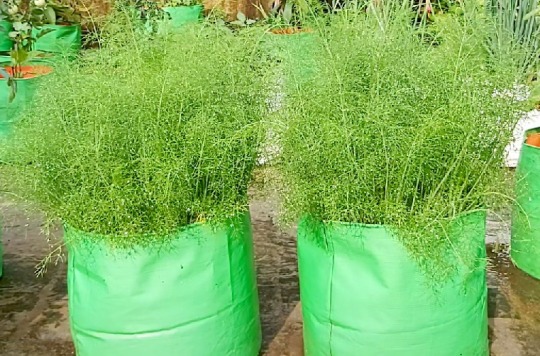
0 notes
Text
Rose plant care
Most people's choice of gardening starts with growing rose plants care because it is the only plant that looks attractive with a sweet-smelling fragrance.

There are about 100+ species of rose plants in the Rosaceae family. Most of them are perennial shrubs with high-yielding flowers. In flowering plants, rose plants care occupy the most important place for their color and fragrance. So, rose plants are called the ‘king of flower

Different hybridization techniques in rose plants are carried out all around the World. And it started with Virginia rose, and Damask rose.


Rose signifies love, beauty, and passion. Petals of roses are loaded with Vitamin C, A, K & iron.
The Garden looks more beautiful with rose plants. But proper care and maintenance are required. Like other flowering plants, rose plant care require well-drained soil. But most importantly, give acceptable water & bright sunlight.
Remember some points before growing rose plants. Here is a list of easy-care rose plant tips!

how is rose plant grow
Rose plants grow faster and healthier with a requirement of 6-8 hours of sunlight because these are sun-loving plants. They hate to live in tree-shady areas.

where do roses grow
Generally, rose plants can grow in pots, grow bags, unused vase, and climbing rose varieties such as Rosa ‘Constance spry’; those thin & soft stems can be trained to trellises or in suitable soil surfaces.

How to increase flowering in rose plants
If there is ample supply of NPK & micronutrients to flowering plants, especially for rose plants it increases bud blooming & flowering.

Animal Manure:
Cow manure or Goat manure application improves soil fertility, and aeration and supplies necessary nutriment to the flowering plants but it is slow-release fertilizer. Apply one handful of 3 months old compost 2 months once & for plants on the soil surface apply two or three small amount of old compost.

COMPOST:
1.Vermicompost:
It is an all-purpose fertilizer with the supply of npk organic fertilizer in equal proportions. But most importantly applies quality vermicompost. One or two spoons apply around the soil for pot plants and double it for ground plants. In 3 months once.

2. Leaf compost:
Nothing but dried leaves, bark, and wood chips of all your garden trees. It acts as mulching for the plants and it provides a good microclimate for the plants.
For rose plants, npk needs of about 20:20:20, and heavy feeding varieties require more.

ORGANIC CAKES:
1. Neem cake powder: The application can be done either as foliar spray or top dressing. One handful of neem powder is enough for 10-12’’ pot rose plants. It will protect the plants from root diseases & pest attacks.

2. Groundnut cake powder: This groundnut powder contains more ‘N’ content compared to Neem cake. It has an NPK in the ratio of 7.5:1.5:1.3. Monthly once smaller amount application is ample to grow Rose plants.

3. Mustard cake powder: In addition, this organic powder consits of micronutrients such as Zn, S, Mn & others. This mustard cake powder is the most useful organic powder to enhance the good growth of plants.

These 3 organic cake powders can be applied only in smaller quantities to rose plants. And also you can apply these 3 at the same time or any 2 @ the same time.
BIO-FERTILIZER:
1. Steamed bone meal: This application is done especially for ‘Phosphorus & Calcium’. This bio-fertilizer steamed bone meal can be applied either as a top dressing or added along with your potting, in about 4 months once.

2. Blood meal, Hoof meal, and Horn meal: This bio-fertilizer can also be applied to rose plants. It supplies more ‘N’ content to plants compared to manure. But most importantly, not to forget these bio-fertilizers should be applied only in smaller quantities.

BIO-STIMULANT
Seaweed Extract: It boosts plant growth and protects from pests and diseases. Apply 4 to 5 scoops or spoon per gallon of water once in about 3 months once.

HOME-BASED FERTILIZER:
1.Onion skin peel & Eggshell waste: Don’t throw these peels and shells into the dustbin. Applying these two plants provides minerals potassium, calcium, proteins, and antioxidants.


Chart for organic fertilizer application
OptionsCycle 1Cycle2Cycle 31.Compost+Groundnut cake powder+Bone meal powderLiquid fertilizer(or)Sea weed extractCow manure+Compost2.Bone meal powderLiquid fertilizerHome based fertilizer3.Neem cake powder+Compost+ Bone meal-Goat manure +Vermicompost4.Mustard cake + compost-Animal manure+ groundnut cake5.Compost + organic manure(any)Sea weed extract
Animal manure +Home based fertilizerTABLE 1.0
Watering: Regularly water the rose plant in summer or even on alternate days. In winter, reduce water supplementation. Check pots drainage holes properly to protect from root rot.

Pruning: Trim the dead, dried, matured plant parts. Do not over prune the plants & its carried for twice in a year.
Soil refilling: Make a regular check on the soil condition in the pot or growbags. And plants get new growth by refilling.

Get Good rose flowers without using Chemical fertilizers
Nowadays people need quicker results & faster plant growth so most of them use chemical fertilizers for higher-yielding in plants and pollute the environment unnecessarily.

Go green with organic fertilizers for good plant growth & save mother earth with greens.
rose plant online
Blog published by: https://www.santhionlineplants.com/
0 notes
Video
youtube
how to make organic npk liquid fertilizer at home
0 notes
Text
Buy Premium Online Plant Fertilizer: The Best Choice for Thriving Gardens
In the realm of gardening, plant fertilizers play a pivotal role in ensuring your plants receive the essential nutrients they need for robust growth and vibrant blooms. The modern gardener has a wealth of options at their fingertips, and with the rise of online shopping, buying premium plant fertilizers has never been easier. At Karudaa Coirs, we understand the importance of quality in your gardening endeavors, which is why we offer a range of premium online plant fertilizers designed to elevate your garden to its fullest potential.

The Benefits of Premium Plant Fertilizers
Premium plant fertilizers are formulated with high-quality ingredients that provide a balanced mix of essential nutrients. These fertilizers often include a blend of nitrogen, phosphorus, and potassium (NPK), along with secondary nutrients like calcium, magnesium, and sulfur, and micronutrients such as iron, manganese, and zinc. The benefits of using premium fertilizers include:
Enhanced Growth and Yield: Premium fertilizers are designed to support vigorous plant growth and increase yield. The balanced nutrient content ensures that plants receive everything they need to develop strong roots, healthy foliage, and abundant flowers or fruits.
Improved Soil Health: Quality fertilizers not only nourish plants but also contribute to the overall health of the soil. Many premium fertilizers contain organic matter or bio-stimulants that enhance soil structure, improve water retention, and promote beneficial microbial activity.
Increased Resilience: Plants nourished with premium fertilizers are better equipped to withstand environmental stressors such as drought, pests, and diseases. The right nutrients can strengthen plant tissues and improve their natural defense mechanisms.
Sustainable Gardening: Many premium fertilizers are formulated with environmentally friendly practices in mind. They may include slow-release formulations that reduce the risk of nutrient runoff and minimize environmental impact.
Why Buy Premium Online Plant Fertilizer?
The convenience of purchasing plant fertilizers online cannot be overstated. Here’s why buying premium online plant fertilizer from Karudaa Coirs is a smart choice:
Accessibility and Convenience: Online shopping allows you to browse and compare a wide range of fertilizers from the comfort of your home. You can read detailed product descriptions, customer reviews, and expert recommendations to make an informed decision.
Exclusive Products: Karudaa Coirs offers a selection of premium plant fertilizers that may not be available in local stores. By shopping online, you gain access to exclusive products that are tailored to meet the specific needs of your plants.
Time and Cost Savings: Buying online eliminates the need for trips to physical stores, saving you time and potentially reducing costs associated with transportation. Additionally, online retailers often offer competitive prices and special promotions.
Expert Advice and Support: Karudaa Coirs provides expert advice and support to help you choose the best fertilizer for your plants. Our knowledgeable team is available to answer your questions and offer guidance on how to use our products effectively.
Doorstep Delivery: Enjoy the convenience of doorstep delivery. Once you’ve made your purchase, your premium plant fertilizer will be delivered right to your door, ensuring you have what you need when you need it.
Choosing the Right Premium Plant Fertilizer
Selecting the right fertilizer for your plants involves understanding their specific needs and growth requirements. Here are some tips to help you choose the best premium fertilizer for your garden:
Know Your Plants: Different plants have varying nutrient requirements. For example, flowering plants may need higher levels of phosphorus to promote blooms, while leafy vegetables benefit from higher nitrogen levels. Research the needs of your plants to select the most suitable fertilizer.
Understand Fertilizer Types: Premium fertilizers come in various forms, including granular, liquid, and slow-release. Granular fertilizers are ideal for general use and can be mixed into the soil. Liquid fertilizers provide quick nutrient uptake and are often used for foliar feeding. Slow-release fertilizers provide a steady supply of nutrients over time.
Consider Soil Health: Assess the condition of your soil before choosing a fertilizer. If your soil is deficient in specific nutrients, select a fertilizer that addresses these deficiencies. Soil tests can provide valuable information about nutrient levels and soil composition.
Opt for Organic Options: Organic fertilizers are derived from natural sources and can improve soil health over time. If you prefer eco-friendly gardening practices, consider organic or sustainably sourced fertilizers.
Read Labels Carefully: Check the nutrient content and formulation of the fertilizer. Premium fertilizers often include additional beneficial ingredients such as amino acids, seaweed extract, or mycorrhizal fungi that enhance plant growth and resilience.
How to Use Premium Plant Fertilizer Effectively
To maximize the benefits of your premium plant fertilizer, follow these guidelines:
Follow Application Instructions: Adhere to the recommended application rates and methods provided by the manufacturer. Over-fertilization can harm plants and the environment, so it’s crucial to apply the correct amount.
Timing Matters: Apply fertilizer during the growing season when plants are actively taking up nutrients. Avoid fertilizing during dormant periods or extreme weather conditions.
Water Thoroughly: Water your plants after applying fertilizer to help dissolve the nutrients and facilitate their uptake. Ensure the fertilizer is evenly distributed around the root zone.
Monitor Plant Response: Observe how your plants respond to the fertilizer. Look for signs of improved growth and health, and adjust your fertilization practices as needed.
Conclusion
Investing in premium online plant fertilizer is a wise decision for any gardener looking to achieve exceptional results. At Karudaa Coirs, we are committed to providing high-quality fertilizers that support plant health and garden success. By choosing to buy premium online plant fertilizer from us, you gain access to top-notch products, expert advice, and the convenience of online shopping. Elevate your gardening experience and enjoy flourishing plants by selecting the best fertilizers for your garden needs.
Visit our website today to explore our range of premium fertilizers and make your purchase. Your garden deserves the best, and with Karudaa Coirs, you can ensure it gets exactly that.
0 notes